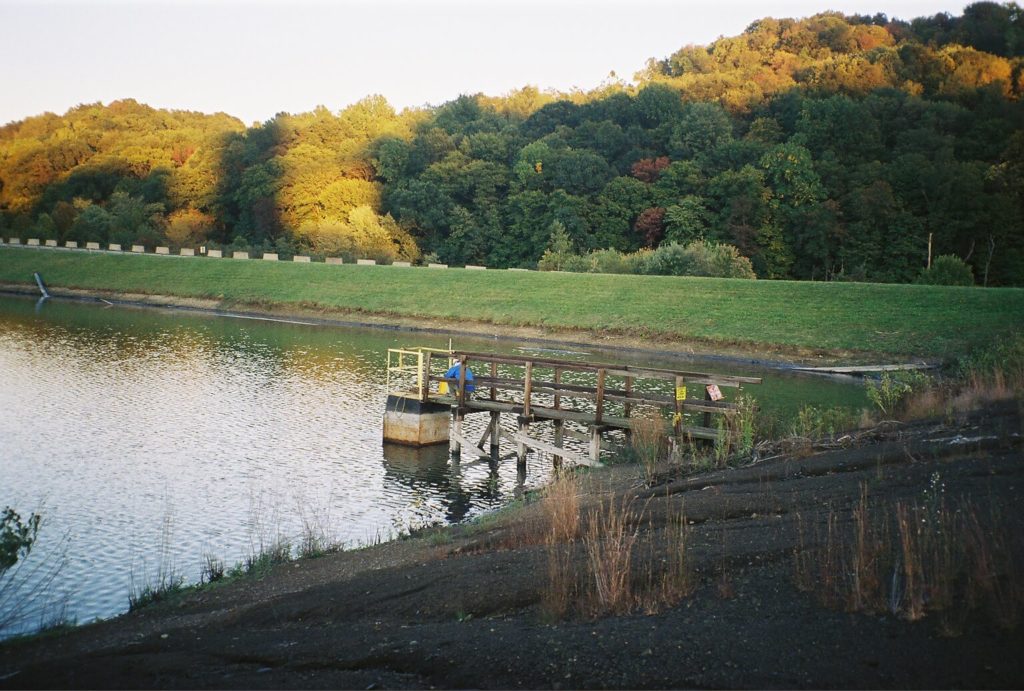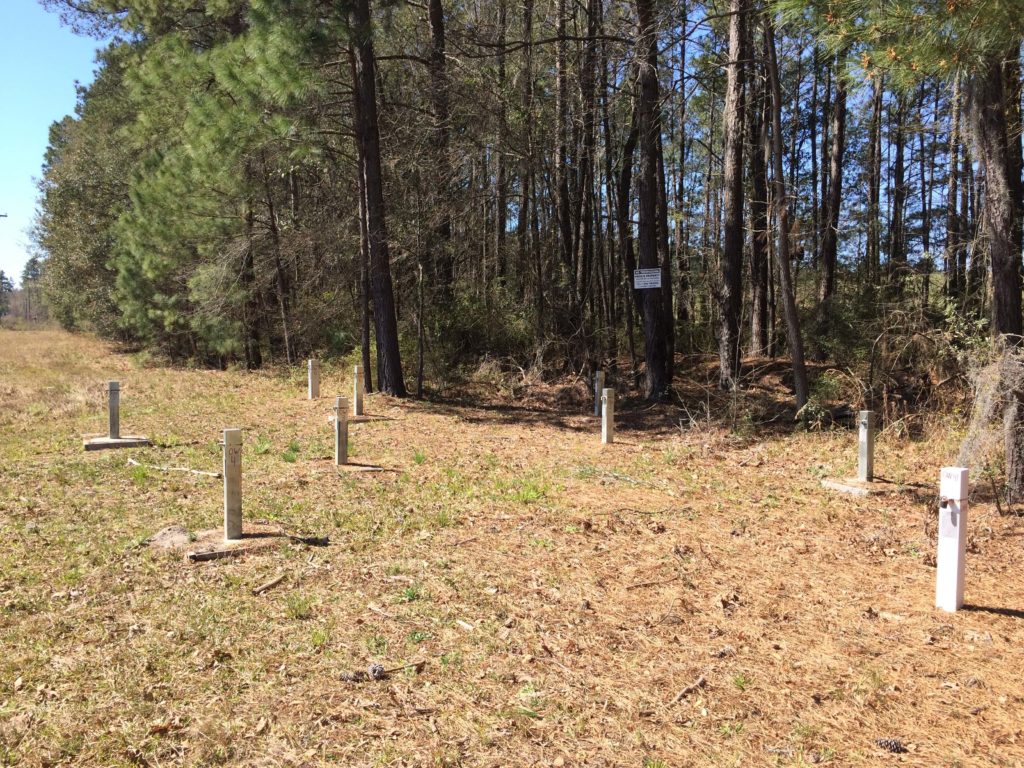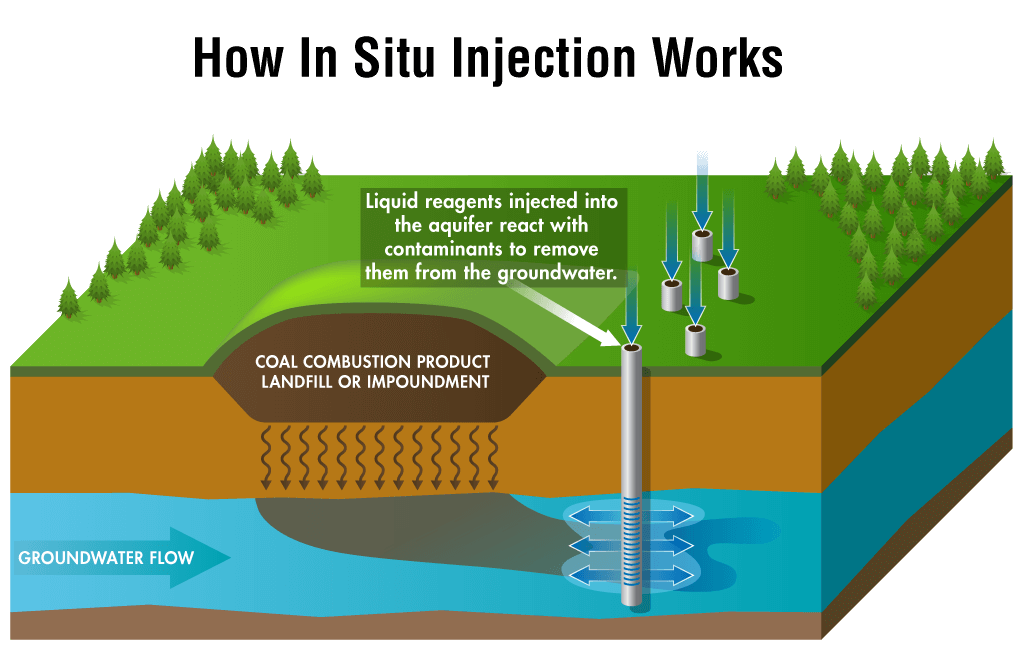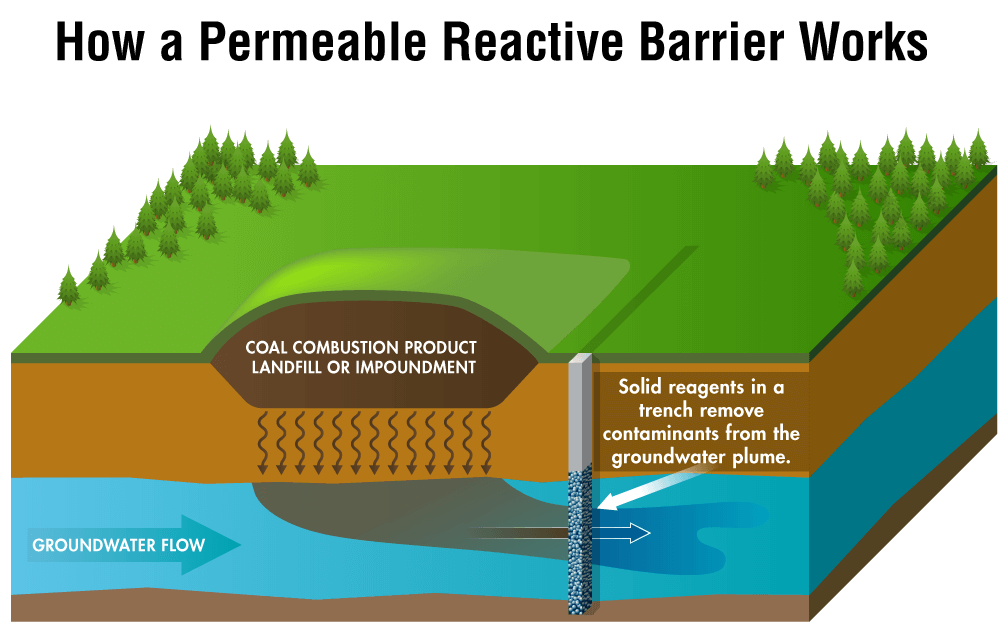EPRI Examines Alternative Technologies for Groundwater Remediation
Each year, coal-fired power plants in the United States produce more than 100 million tons of coal combustion products (CCPs). These include fly ash (fine particles), bottom ash and boiler slag (coarse particles that form in the bottom of a coal furnace), and flue gas desulfurization solids.
About half of these materials are reused for products such as wallboard and concrete and in applications such as road base, saving on the use of other materials, reducing greenhouse gas emissions produced by other processes, and often providing superior performance. The remainder is managed in landfills and impoundments. CCPs can contain soluble salts such as calcium and sulfur along with trace elements such as arsenic, boron, molybdenum, and selenium. If water enters a landfill or impoundment and is not captured by a liner or leachate collection system, these elements can be released to groundwater.

In 2015, the U.S. Environmental Protection Agency (EPA) published a final rule regulating the management, disposal, and beneficial use of CCPs. As part of provisions to address risks associated with releases to groundwater, the rule provides criteria for determining whether a release has occurred as well as timelines for corrective actions. (Other provisions deal with the design, operation, and closure of CCP landfills and impoundments.)
In anticipation of the groundwater requirements, EPRI has been researching remediation technologies that can help utilities implement corrective actions at CCP landfills and impoundments.
Enforcement Through Citizen Suits and State Programs
The 2015 federal rule gave utilities until October 2017 to collect groundwater monitoring data at their landfills and impoundments. Now they are using the data to develop strategies for complying with groundwater standards.
Under the 2015 rule, citizens can enforce compliance by filing lawsuits under the federal Resource Conservation and Recovery Act. Subsequent federal legislation clarified that states can develop permit programs to implement the federal rule. In addition, many states have their own requirements that predate the federal rule and continue in effect. The federal rule requires that utilities annually publish their groundwater data and other information on a public website.
Testing Alternative Remediation Technologies
Most groundwater remediation researchers and developers have devoted less attention to the inorganic constituents that CCPs can release to groundwater, focusing instead on organic compounds from fuels and solvents. Among those that do address inorganics broadly, EPRI research is unique in that it addresses inorganic constituents found at CCP facilities.
For CCP landfills and impoundments, several options are available and effective for groundwater remediation:
- Excavating CCPs (which are then either reused in various beneficial applications or placed in a lined facility)
- Capping the facility to limit infiltration of precipitation
- Constructing a barrier around the facility to contain groundwater and prevent its migration to other areas
- Pumping groundwater out of aquifers to remove contaminants and prevent migration off-site
- Monitoring natural attenuation of contaminant concentrations in groundwater
For many CCP landfills and impoundments, these strategies are the only feasible options. However, they can be expensive, take years to complete, and in some cases are not ideal from environmental and public-interest perspectives. EPRI is assessing the effectiveness of two alternative remediation technologies—in situ injection and permeable reactive barriers—with potential for faster results at lower cost.
With in situ injection, liquid reagents are injected into an aquifer to treat the groundwater in place. While commonly used to remediate groundwater contaminants such as arsenic, the applicability to CCP impoundments and landfills is a research gap when given the need to remove multiple contaminants.
EPRI lab-tested several reagents’ injectability and evaluated their capacity to reduce concentrations of various contaminants. The reagents proved effective on some elements (such as arsenic and molybdenum) while concentrations of other elements (such as boron) were unaffected.
“Next, we are planning field tests to inject a reagent in groundwater and see how it performs,” EPRI Technical Leader Bruce Hensel said. “In the laboratory, it’s difficult to completely reproduce conditions in an aquifer. Reagents may be more effective or less effective in the field.”
According to EPRI Technical Executive Ken Ladwig, research is needed on obtaining good mixing of the reagent with the affected groundwater. In a prior field test, difficulties with injection limited the reagent’s area of influence.
For permeable reactive barriers, the approach differs. A trench is dug into a contaminated aquifer, and a mixture of solid reagents is placed into the trench. Groundwater flows through the trench, and the reagents react with contaminants—removing them from the groundwater plume.
This is a mature technology but has rarely been applied to groundwater plumes from CCP impoundments and landfills. EPRI is examining its effectiveness in removing the contaminants commonly found at CCP sites. In the laboratory, researchers tested various compounds on soil and groundwater samples from a CCP landfill known to have elevated arsenic and boron levels. Several compounds successfully treated arsenic, though only one was effective at removing boron.
“Permeable reactive barriers show promise for application at CCP facilities. We have a pretty good idea of how to select reagents and design barriers for various constituents found in the leachate,” said Ladwig. “Now we need to test how they work with complex mixtures and groundwater flow conditions that may occur in the field.”

Developing Site-Specific Groundwater Solutions
Because no two CCP facilities are the same, remediation strategies will be site-specific—dictated by differing geology, geochemistry, contaminants, facility configurations, and state rules.
“Some states have not required groundwater monitoring around CCP facilities; others have required it,” Hensel said. “So, some impoundment and landfill owners have historical monitoring data while others don’t.”
When states adopt the federal rule, they may allow risk-based remediation, which involves site-specific assessments and remediation to acceptable risk levels. This would have significant effects on the types and duration of remediation programs.
“We are going to sustain active research on risk-based remediation because we expect it to be an important component of corrective action in the future,” Hensel said.
By helping utilities better understand the state of remediation technology and the available and emerging options, EPRI is helping inform their compliance planning.
“Remediation can cost tens of millions of dollars per site and take decades to complete,” said Hensel. “Great care must be taken to select the most effective, economic technologies. Utilities can use EPRI research to start off in the right direction by identifying promising options most suitable for their sites. This will guide their future work with consultants as they develop detailed remediation strategies.”
Cap or Move a Coal Ash Facility?
EPRI developed the Relative Risk Framework tool to assist utilities in determining whether to cap a coal combustion product facility or excavate and move it. “If you cap it and leave it in place, the risk involves groundwater and surface water,” said EPRI Technical Leader Bruce Hensel. “If you dig it up, you’re adding new risk pathways such as air quality and worker safety.”
The tool informs utilities on the various impacts of each option, including groundwater, surface water, air quality, accidents, energy consumption, and water use.
“We want to provide utilities with the information they need to make fact-based, scientific decisions no matter which way they decide to go,” Hensel said.
Key EPRI Technical Experts:
Bruce Hensel, Ken Ladwig
For more information, contact techexpert@eprijournal.com.
Additional Resources:
- Corrective Action for Closed and Closing Ash Ponds
- The Role of Risk Assessment in Corrective Actions Under the Coal Combustion Residuals Rule
- Treatability Testing of In Situ Injection Reagents for Use at Coal Combustion Residual Sites
- Pilot Tests of In Situ Reactive Zone Groundwater Remediation for Arsenic Near a Coal Ash Pond
- Laboratory Testing of Reactive Media for Permeable Reactive Barriers to Treat Groundwater Affected by Coal Combustion Residual Leachate
- Monitored Natural Attenuation for Inorganic Constituents in Coal Combustion Residuals
- Corrective Action Technology Profile: Practical Feasibility of In Situ Stabilization/Solidification as a Source Control for Coal Combustion Residuals
- Corrective Action Technology Profile: Groundwater Extraction and Treatment at Coal Combustion Residual Facilities
- Alternative Cover Systems for Coal Combustion Residuals Landfills and Surface Impoundments
- Evaluation of a Remedial Action at an Unlined Coal Ash Landfill: PI Site
- Evaluation of Remedial Actions at an Unlined Coal Ash Landfill: CS Site
- Evaluation and Modeling of Cap Alternatives at Three Unlined Coal Ash Impoundments
- Cost and Application Considerations for Remediation Technologies at Coal Combustion Residual Landfills and Impoundments
Artwork and Graphics by Craig Diskowski/Edge Design




